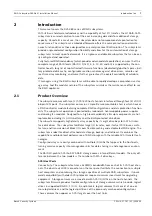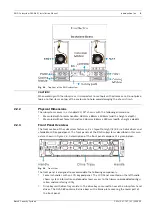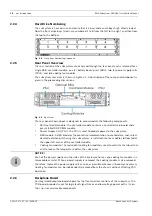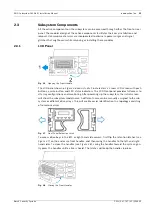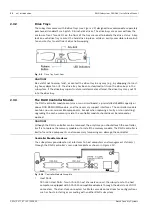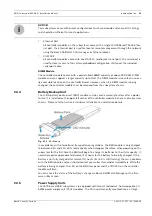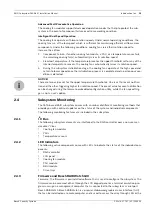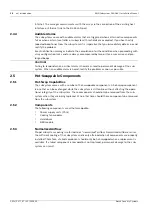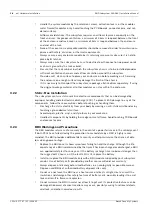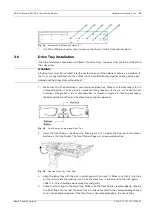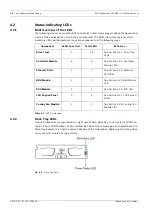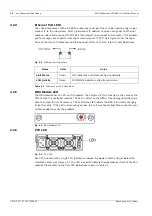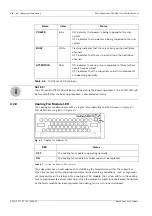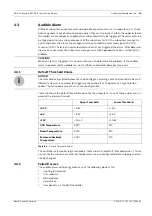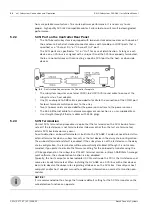
18
en | Hardware Installation
RAID Subsystem DVA-08K | Installation Manual
F.01U.027.797 | V1 | 2006.05
Bosch Security Systems
•
Handle the system modules by the retention screws, extraction levers, or the modules
metal frames/faceplates only. Avoid touching the PCB boards, connector pins, and sol-
dered surfaces.
•
Airflow considerations: The subsystem requires an airflow clearance especially on the
front and rear. For proper ventilation, a minimum of 2.5cm is required between the front
of the enclosure and rack cover; a minimum of 5cm is required between the enclosure
and end of the rack.
•
None of the covers or replaceable modules should be removed in order to maintain com-
pliance with safety, emission, or thermal requirements.
•
Always secure every enclosure module by its retaining screws or make sure it is held in
place by its latches.
•
Always make sure the subsystem has a safe electrical earth connection via power cords
or chassis ground by the rack cabinet.
•
Be sure that the rack cabinet in which the subsystem chassis is to be installed provides
sufficient ventilation channels and airflow circulation around the subsystem.
•
Provide a soft, clean surface to place your enclosure on before working on it. Servicing
the enclosure on a rough surface may damage the finish of the chassis.
•
If it is necessary to transport the subsystem, repackage all disk drives separately. If using
the original package material, all other modules can stay within the enclosure.
3.2.2
Static-Free Installation
The subsystem contains static-sensitive electronic components that can be damaged by
improper handling and electrostatic discharge (ESD). To prevent ESD damage to any of the
components, follow these precautions before touching or handling them:
•
Discharge the static electricity from your body by wearing an anti-static wristband or by
touching a grounded metal surface.
•
Avoid carpets, plastic, vinyl, and styrofoam in your work area.
•
Handle all components by holding their edges or metal frame. Avoid touching PCB boards
and connector pins.
3.2.3
BBU Warnings and Precautions
The BBU module sustains cache memory in the event of a power failure or in the unlikely event
if both PSUs have failed. Having the protection to cached data by a BBU is highly recom-
mended. The BBU provides additional data security and helps minimize the chance of data
loss during power outage.
•
Replace the BBU once it shows symptoms failing to hold the charge. Although the life
expectancy of a BBU is determined by the times it has been charged or discharged, a BBU
can approximately last for one year. If the battery recharge time is obviously longer than
the suggested 12 hours, or if the fault LED is lit, replace the battery.
•
Install or replace the BBU module only with a BBU module supplied by your subsystem
vendor. Use of battery cells provided by another source will void our warranty.
•
Always dispose of discharged or used batteries in an ecologically responsible manner.
Dispose used BBUs at authorized battery disposal sites only.
•
Do not use nor leave the BBU near a heat source or direct sunlight. Heat can melt the
insulation and damage other safety features of battery cells, possibly leading it to acid
leak and result in flames or explosion.
•
Do not immerse the BBU in water nor allow it to get wet. Its protective features can be
damaged. Abnormal chemical reactions may occur, possibly causing functional defects,
acid leak, and other hazardous results.
Summary of Contents for DVA-08K
Page 1: ...RAID Subsystem DVA 08K DVA 08K SCSI Premium Series en Installation Manual ...
Page 2: ......
Page 61: ......




